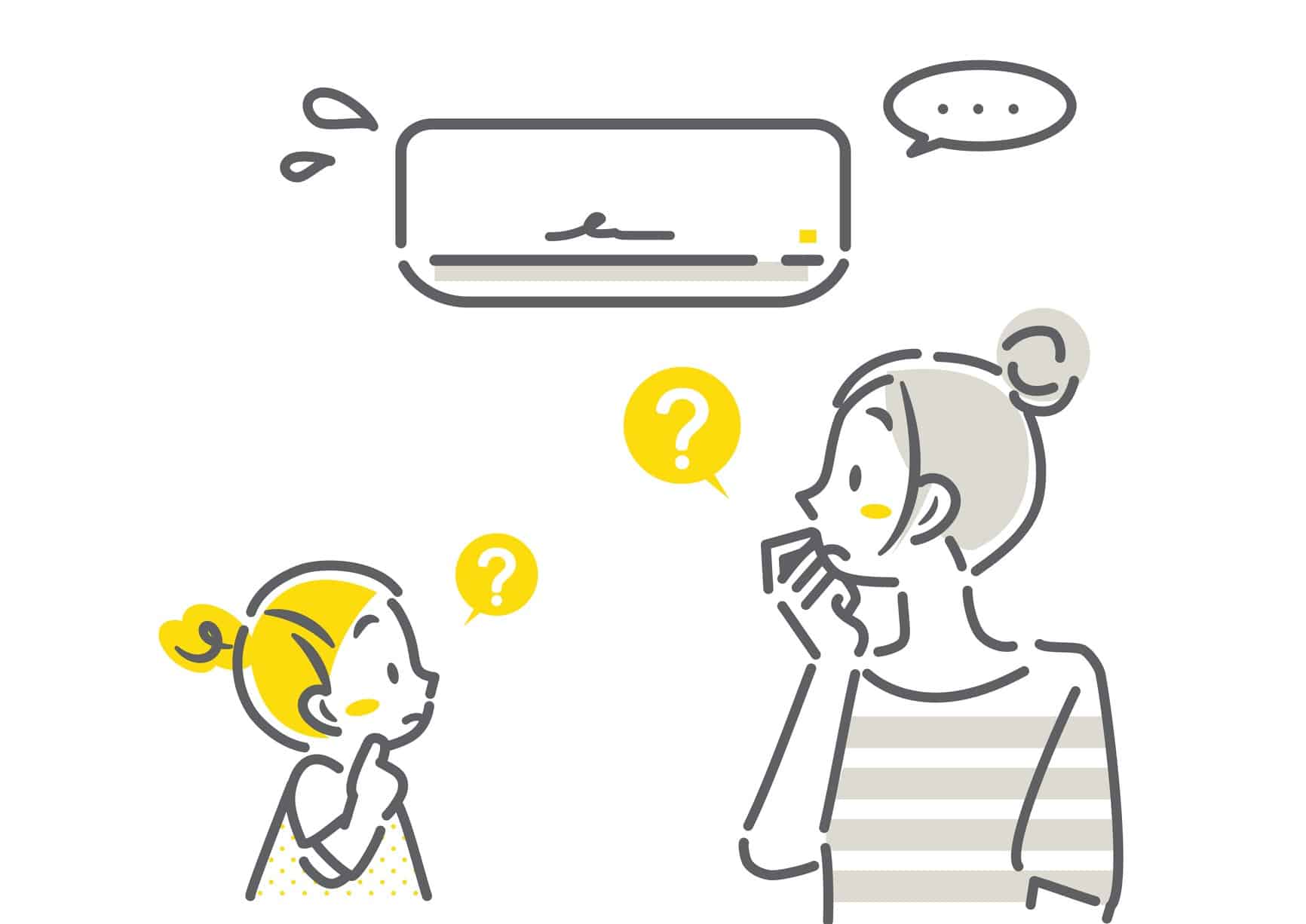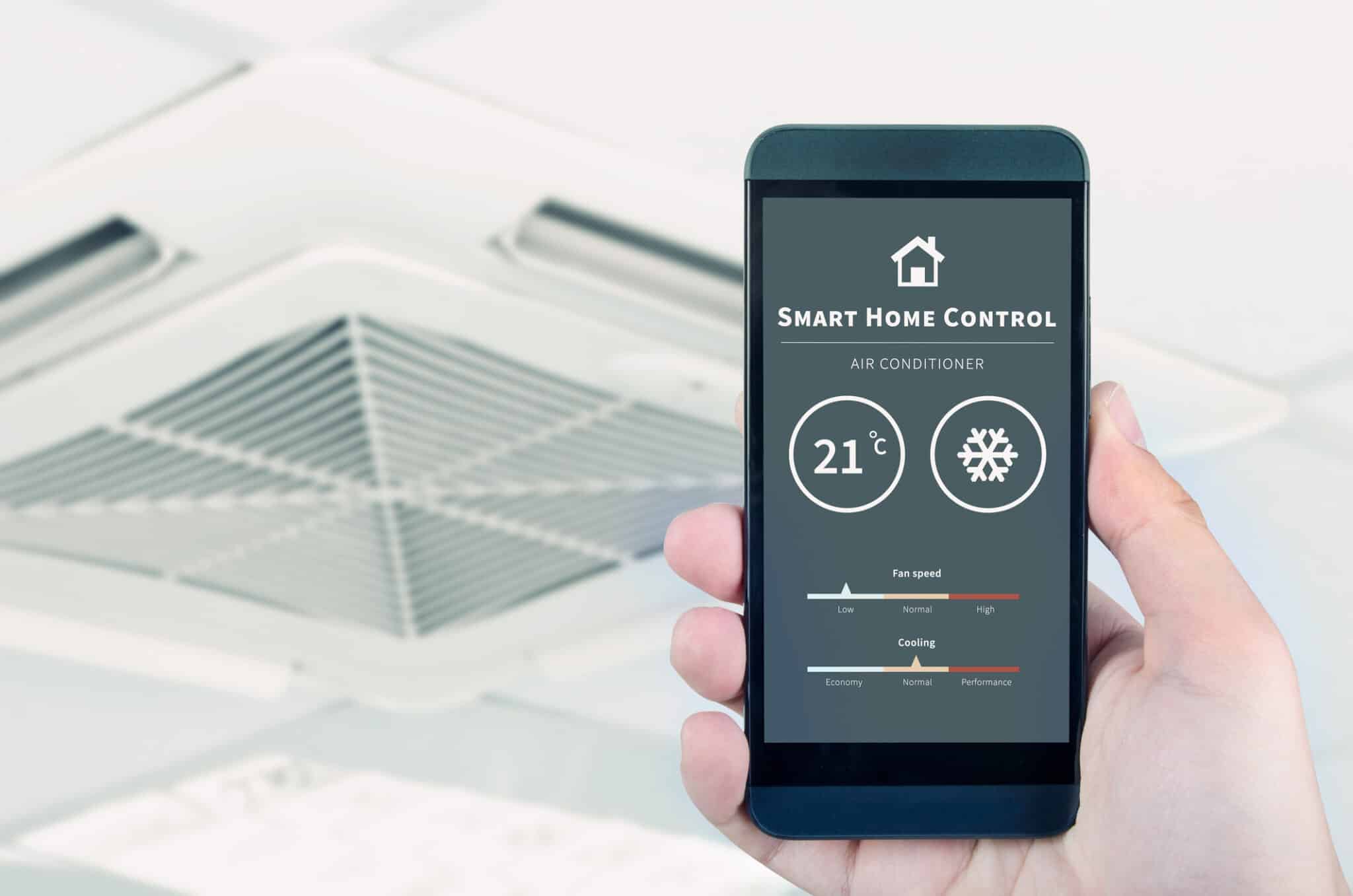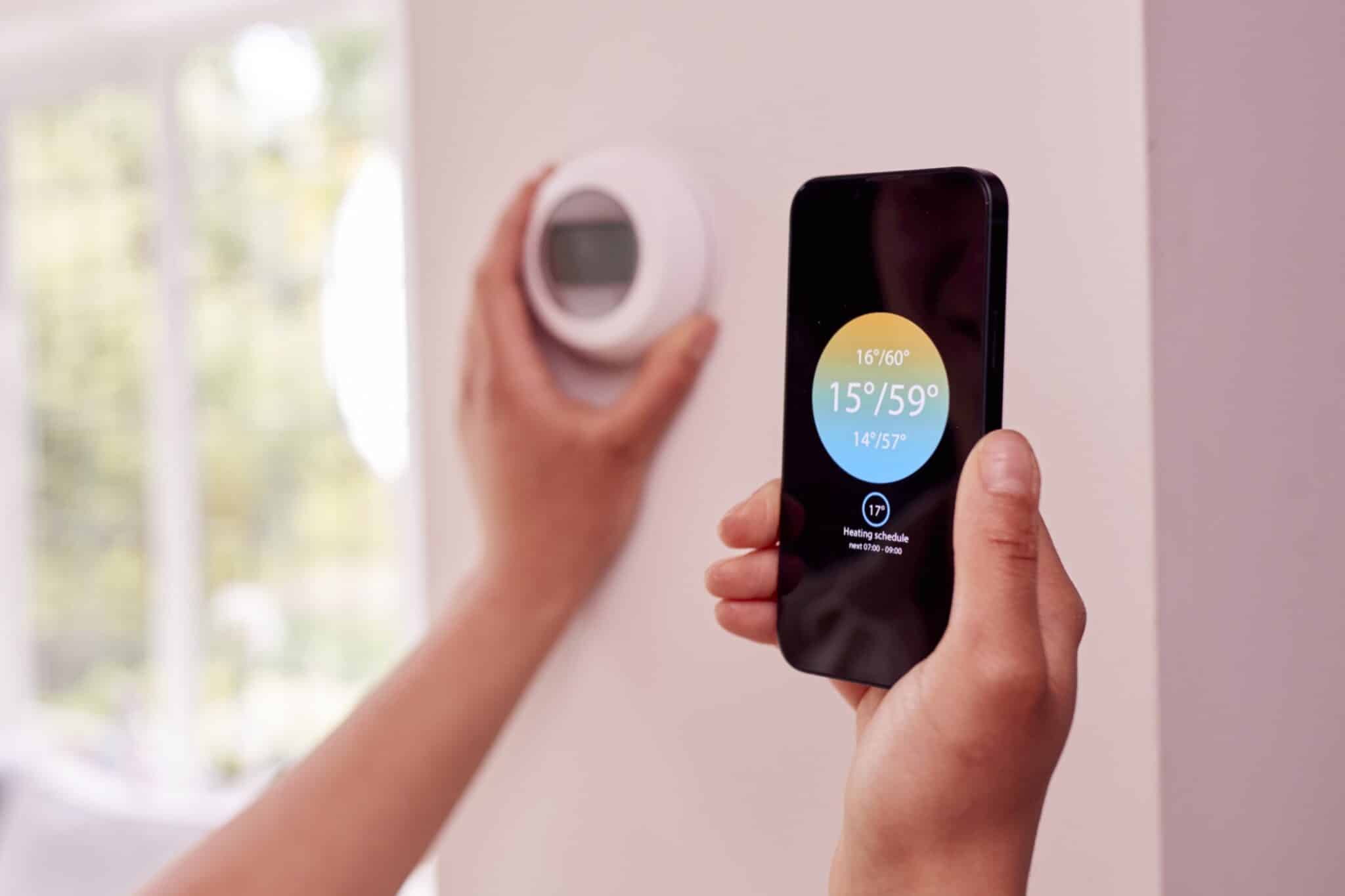Want to upgrade your home’s heating and cooling system? Discover the advantages of smart HVAC systems and how they can transform your living experience in San Diego.
These cutting-edge systems offer energy efficiency, enhanced comfort, and seamless integration with your smart home devices. Smart HVAC systems adjust heating and cooling based on real-time data, reducing energy waste and saving you money.
They also improve air quality with integrated air purifiers and provide remote control through your smartphone or tablet.
Explore everything you need to know about smart HVAC systems, from their key components to their numerous benefits, and make your home smarter and more comfortable.
What is a Smart HVAC System?
Smart HVAC systems are the latest advancement in home comfort technology, designed to enhance energy efficiency and provide unparalleled convenience.
These systems integrate seamlessly with modern lifestyles, making it easier than ever to maintain a comfortable home environment.
A smart HVAC system refers to heating, ventilation, and air conditioning equipment that can be controlled remotely using a smartphone, tablet, or computer.
These systems leverage advanced sensors, connectivity, and automation to maintain optimal indoor climates while minimizing energy consumption.
By continuously monitoring and adjusting based on real-time data, smart HVAC systems ensure your home remains comfortable and energy-efficient.
They represent a significant upgrade from traditional HVAC systems, offering a more interactive and responsive way to manage home comfort.

Why Choose Smart HVAC for Your San Diego Home?
Energy Efficiency and Cost Savings
Smart HVAC systems are designed to optimize energy usage, leading to significant cost savings on utility bills. By using advanced sensors and smart thermostats, these systems adjust heating and cooling based on real-time data, reducing energy waste.
In a city like San Diego, where temperatures can fluctuate from mild to extremely warm, this efficiency is particularly beneficial. The system can learn your habits and preferences, ensuring that energy is only used when necessary.
For instance, it can reduce cooling when the house is empty and ramp it up just before you return home. This smart approach not only lowers energy consumption but also extends the lifespan of your HVAC equipment by preventing unnecessary wear and tear.
Enhanced Comfort and Convenience
Smart HVAC systems provide unparalleled comfort by maintaining consistent temperatures throughout your home. With remote access through your smartphone or tablet, you can easily adjust settings from anywhere.
Whether you are at work, on vacation, or simply lounging in another room, you can control your home’s climate with a few taps.
This convenience ensures that your home is always at the perfect temperature when you return, eliminating the discomfort of walking into a hot house during a San Diego summer or a chilly home in the winter.
Additionally, many smart HVAC systems offer features like zoning, which allows you to set different temperatures for different areas of your home, further enhancing comfort.
Improved Air Quality and Health Benefits
Maintaining good indoor air quality is crucial for health, especially in areas with high pollen counts or pollution. Smart HVAC systems often include integrated air purifiers and humidifiers, which help to filter out contaminants and maintain optimal humidity levels.
This feature is especially beneficial for individuals with allergies or respiratory issues. By constantly monitoring and adjusting air quality, these systems ensure that your home remains a healthy environment.
They can remove dust, pollen, pet dander, and other pollutants, which is essential for San Diego residents who may face seasonal allergies or air quality issues due to coastal pollution.
This level of integration not only simplifies home management but also contributes to a more energy-efficient and responsive living environment.
How Smart HVAC Systems Work
Components of a Smart HVAC System
Smart HVAC systems consist of several key components working together to provide optimal comfort and efficiency. These components include smart thermostats, smart vents, sensors, and sometimes smart humidifiers and air purifiers.
Each plays a crucial role in maintaining the desired indoor climate. By working in unison, these components ensure that your home is comfortable, energy-efficient, and has good air quality.
Smart Thermostats
Smart thermostats are the central control units of smart HVAC systems. They learn your schedule and preferences over time, automatically adjusting the temperature to ensure comfort while maximizing energy efficiency.
Many smart thermostats also offer remote control via mobile apps, allowing you to make adjustments from anywhere. This feature ensures that your home is always at the perfect temperature, even if your plans change unexpectedly.
Smart Vents and Their Functionality
Smart vents are designed to regulate airflow in different rooms of your home. By opening and closing based on occupancy and temperature settings, they ensure each room receives the right amount of air.
This targeted airflow reduces energy consumption and enhances comfort by preventing hot or cold spots within your home. Additionally, smart vents can help balance the temperature more effectively, making your HVAC system work more efficiently.
Understanding how these components interact helps you appreciate the efficiency and convenience of smart HVAC systems, making them a wise choice for any San Diego homeowner.
Customization and Control
Wi-Fi Connectivity and Remote Access
One of the standout features of smart HVAC systems is their Wi-Fi connectivity, allowing for remote access and control. This means you can adjust your home’s temperature from anywhere using a smartphone or tablet.
Whether you’re at work, on vacation, or simply in another part of the house, you have full control over your HVAC settings. This ensures your home is always comfortable upon your return, eliminating the need to manually adjust settings when you get home.
Learning Capabilities and Scheduling
Smart HVAC systems come equipped with learning capabilities that adapt to your daily routines and preferences. Over time, the system learns when you are typically home and adjusts the temperature accordingly.
This automatic adjustment not only ensures comfort but also maximizes energy efficiency. Additionally, you can set specific schedules to align with your lifestyle, such as lowering the temperature at night or increasing it just before you wake up, further enhancing both comfort and energy savings.
Integration with Smart Home Ecosystems (Alexa, Google Home)
Integration with smart home ecosystems such as Alexa and Google Home takes convenience to another level. You can use voice commands to adjust the temperature, set schedules, or check the system’s status.
This seamless integration allows your smart HVAC system to work in harmony with other smart devices, creating a cohesive and intuitive home environment.
For instance, you can create routines that adjust the HVAC settings automatically when you leave the house or go to bed, making your home more responsive to your needs.
By leveraging these customization and control features, smart HVAC systems offer a tailored home climate experience that is both convenient and efficient.

Types of Smart HVAC Systems
Central Air Conditioning Systems
Central air conditioning systems are commonly used in larger homes and are a popular choice for integrating smart technology. These systems cool the entire home through a network of ducts, delivering consistent and even cooling across all rooms.
When paired with a smart thermostat, they offer efficient and convenient temperature control, allowing you to customize cooling schedules and settings based on your daily routines.
Additionally, smart central AC systems can be monitored and adjusted remotely, ensuring optimal comfort and energy use regardless of whether you are at home or away.
Heat Pump Systems
Heat pump systems are versatile and efficient, capable of both heating and cooling your home. These systems transfer heat from one place to another, using refrigerant to provide climate control, making them highly efficient compared to traditional systems.
When equipped with smart technology, heat pump systems can learn your preferences, adjust settings automatically based on real-time data, and offer remote access for convenient control.
This makes them an excellent choice for year-round comfort in San Diego’s mild climate, where extreme temperatures are rare but consistent comfort is desired.
Hybrid Split/Dual-Fuel Systems
Hybrid split or dual-fuel systems combine the benefits of a heat pump with a traditional furnace, offering a flexible and efficient heating and cooling solution.
These systems switch between electricity and gas, depending on which is more efficient at the time, optimizing energy use and cost.
Smart controls can optimize this process, ensuring the most cost-effective operation by choosing the most economical energy source based on current conditions.
This type of system is ideal for homeowners looking for flexibility and efficiency in varying weather conditions, providing reliable performance throughout the year.
Understanding the different types of smart HVAC systems helps you choose the best option for your home, ensuring both comfort and energy efficiency.
Installation and Setup
Professional Installation vs. DIY
When it comes to installing a smart HVAC system, you have the option of professional installation or a DIY approach. Professional installation ensures that the system is set up correctly and efficiently, minimizing the risk of errors and potential damage.
Experts can also provide valuable advice on optimizing the system for your specific home, taking into account factors like layout and insulation.
However, for those who are handy and have some technical knowledge, a DIY installation might be a cost-effective option. It’s essential to follow the manufacturer’s guidelines closely to avoid any mishaps.
Compatibility with Existing Systems
Before installing a smart HVAC system, it’s essential to check compatibility with your existing setup. Many smart HVAC components are designed to work with standard HVAC systems, but some older models may require upgrades or modifications.
Ensuring compatibility can save time and money during the installation process. Consulting with a professional can help determine if your current system needs any adjustments or if a complete overhaul is necessary to support smart technology.
Considerations for San Diego Climate
San Diego’s climate plays a significant role in selecting and setting up your smart HVAC system. With mild winters and warm summers, it’s crucial to choose a system that can efficiently handle both heating and cooling.
Additionally, consider features like humidity control and air purification to enhance indoor air quality, which can be particularly beneficial in a coastal environment.
Proper insulation and ventilation adjustments might also be necessary to ensure the system operates at its best, providing year-round comfort.
By carefully considering these factors, you can ensure a smooth installation process and optimal performance of your smart HVAC system.
Environmental Impact
Reduced Energy Consumption and Carbon Footprint
Smart HVAC systems are designed to be energy-efficient, significantly reducing your home’s energy consumption. By optimizing heating and cooling based on real-time data and usage patterns, these systems ensure that energy is not wasted.
For example, they can automatically adjust the temperature when you’re not home, maximizing efficiency.
This intelligent management of energy use cuts down on utility bills and extends the life of your HVAC equipment.
This reduction in energy use translates to a lower carbon footprint, contributing to a more sustainable environment by decreasing greenhouse gas emissions and supporting renewable energy integration.
Contribution to Sustainability Efforts
Investing in a smart HVAC system is not only beneficial for your home but also for the planet. Many smart HVAC systems are compatible with renewable energy sources like solar panels, further enhancing their environmental benefits.
Additionally, by reducing overall energy demand, smart HVAC systems support broader sustainability efforts aimed at decreasing greenhouse gas emissions and conserving natural resources.
Choosing a smart HVAC system is a proactive step towards creating a more sustainable home and contributing to global environmental efforts.
Maintenance and Upkeep
Regular Maintenance Tips
Maintaining your smart HVAC system is crucial to ensure its longevity and efficiency. Regular maintenance tasks include replacing air filters every one to three months, cleaning vents and ducts, and checking for any system updates or software improvements.
These simple steps can prevent potential issues and keep your system running smoothly. Additionally, keeping the outdoor unit free of debris and ensuring that all sensors and components are clean and functional can further enhance the system’s performance and efficiency.
Common Issues and Troubleshooting
Even with regular maintenance, you may encounter occasional issues with your smart HVAC system. Common problems include connectivity issues, sensor malfunctions, or thermostat errors.
These issues can disrupt the system’s efficiency and your home’s comfort. Fortunately, most smart HVAC systems come with built-in diagnostic tools that can help identify and resolve these problems quickly.
Additionally, consulting the user manual or reaching out to customer support can provide valuable guidance on troubleshooting and repairs.
Ensuring prompt attention to these issues can minimize disruptions and maintain the optimal performance of your system, keeping your home comfortable and efficient.
Importance of Professional Inspections
While regular DIY maintenance is essential, scheduling professional inspections at least once a year is equally important. HVAC professionals can perform thorough system checks, clean and tune up components, and identify potential problems before they become significant.
This proactive approach ensures that your smart HVAC system remains in optimal condition and continues to deliver energy-efficient performance.
Furthermore, professional inspections can uncover issues that may not be evident during routine maintenance, providing peace of mind and long-term reliability.
By following these maintenance and upkeep guidelines, you can extend the lifespan of your smart HVAC system and maintain a comfortable and energy-efficient home.
Experience Unmatched Comfort Today!
Ready to upgrade to a smart HVAC system? One Hour Heating & Air Conditioning San Diego offers expert installation and top-notch service in San Diego, El Cajon, and Lakeside to ensure your home is always at the perfect temperature.
Don’t wait—contact us today at 619-639-4017 to schedule your consultation and take the first step towards a more comfortable, efficient home. Enjoy the convenience and savings of smart technology with our professional help.
FAQs about Smart HVAC Systems
What is a smart HVAC system?
A smart HVAC system is an advanced heating, ventilation, and air conditioning setup that can be controlled remotely via a smartphone, tablet, or computer. It uses sensors and automation to optimize energy efficiency and maintain comfortable indoor temperatures.
How do smart thermostats work?
Smart thermostats learn your schedule and temperature preferences over time, adjusting the heating and cooling automatically. They can be controlled remotely and provide energy usage reports to help you manage your energy consumption more efficiently.
Are these systems worth the investment?
Yes, these systems are worth the investment due to their energy efficiency, convenience, and potential cost savings on utility bills. They also offer enhanced comfort and can improve indoor air quality, making them a valuable addition to any home.
How to choose the right one for your home?
To choose the right system, consider factors such as your home’s size, existing HVAC setup, climate, and specific needs like air quality or humidity control. Consulting with a professional can also help you select the best system for your requirements.
What maintenance is required for these systems?
Regular maintenance includes replacing air filters, cleaning vents, and ducts, checking for software updates, and scheduling annual professional inspections. These steps ensure the system operates efficiently and extends its lifespan.



















